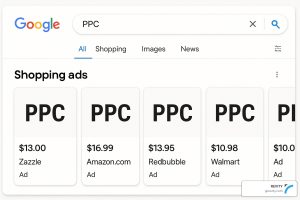In today’s digital marketplace, having a website isn’t enough — your content marketing must shout loudly to capture attention.
Understanding the interplay between SEO and content marketing forms the crux of today’s digital strategies. Without this knowledge, online efforts easily dissipate into the ether.
This article will guide you through the essential inclusions for content that ranks well and attracts and converts new business. Welcome to a journey where words meet purpose and strategy meets creativity.
Understand SEO and content marketing
In today’s digital landscape, businesses strive to rank well on search engines and attract new customers. To accomplish this, it’s crucial to understand the fusion of Search Engine Optimization (SEO) and content marketing.
SEO is optimizing your online content so that a search engine shows it as a top result for a particular search query. Content marketing, on the other hand, focuses on creating and distributing valuable, relevant content to attract and retain a clearly defined audience.
SEO and content marketing form a synergistic relationship where SEO demands content, and content marketing is content. SEO sets the requirements, and content marketing fulfills them. By integrating SEO practices into your content marketing strategy, you create a powerful tool that increases your visibility in search results, drives organic traffic to your site, and brings in new business.
By leveraging keyword research tools, understanding ranking signals, and keeping up-to-date with the latest alterations in the search engine algorithm, you can craft content that appeals to the audience and satisfies the technical requisites of search engines like Google.
If you aren’t sure how to do this, a content marketing service can help.
The basics of SEO
SEO encompasses various elements that work together to improve your website’s visibility in organic search results. Key components include using relevant keywords that align with what your potential customers are searching for, ensuring your site is free of broken links, employing internal linking strategies to keep users engaged, and optimizing your site for mobile devices.
Another fundamental aspect is understanding the importance of domain authorities, which signify the credibility and relevance of your site in its niche. High domain authority leads to improved search engine rankings. Tools like Google Search Console will also help you monitor and enhance your website’s presence in Google Search results.
Avoiding outdated practices such as keyword stuffing is vital, as it might negatively affect your search rankings. SEO is more than tossing keywords into your blog posts; it’s about crafting a seamless experience for users and search engines.
Content marketing strategy
An effective content marketing strategy goes beyond churning out blog posts. It requires a deep understanding of your audience’s needs and search behaviors, which you can identify through keyword research and analyzing search volume data.
Strategically created content aligned with your audience’s search queries helps build authority in your niche and often leads to higher search engine rankings. Your content must be informative, engaging, and relevant to keep users engaged and lower bounce rates.
Internal linking within your content will aid users in navigating your website and discovering more valuable content, thereby increasing the average time spent on your site. Furthermore, successful content marketing is responsive to changes in search engine algorithms, ensuring that your content remains relevant and performs well organically.
Incorporating visuals or a call-to-action enhances the content’s effectiveness, potentially increasing click-through rates. Lastly, including your business in listings such as Google Maps is an important piece of your content marketing strategy, as it enhances local SEO and helps drive organic traffic to brick-and-mortar locations.

Key elements to include in your content
Incorporating certain key elements into your content is essential to truly excel in digital marketing and boost your business’s online presence. Crafting content that ranks well in search engines and entices new business involves a balanced mix of technical SEO and engaging material.
This includes thorough keyword research, creating captivating headlines, providing comprehensive and authoritative content, aligning with user intent, enriching content with visuals and multimedia, strengthening your network through internal and external linking, and providing clear calls to action (CTAs).
Each component plays a vital role in optimizing your content for potential customers and search engine algorithms, creating a synergy that propels your brand toward success.
Keyword research and optimization
Embarking on keyword research is like uncovering a roadmap to your audience’s wants and needs. Utilizing keyword research tools and understanding search volume enables you to identify terms and phrases that potential customers use to find services or products similar to yours.
Optimization doesn’t stop there — it’s crucial to strategically place relevant keywords throughout your content without falling into the trap of keyword stuffing. Incorporating these terms naturally within the text, titles, and meta descriptions helps search engines recognize the relevancy of your content, improving your chances of ranking for those search terms.
Engaging, relevant headlines
Captivating headlines is the hook that draws readers into your content. They should be relevant to the subject matter and promise value that encourages the user to continue reading. Headlines can impact your search rankings and Click-through rate (CTR), as they often determine a user’s first impression.
Crafting informative and intriguing headlines — incorporating targeted keywords without compromising creativity — is paramount for engaging your audience right from the start.
Quality and comprehensive content
The meat of any content strategy is, undoubtedly, the content itself. Producing high-quality, comprehensive information that addresses your audience’s questions and needs is indispensable.
Content should be well-researched, accurate, and thorough, covering topics sufficiently to position your website as an authority.
Content that educates, informs, or entertains while maintaining high editorial standards is more likely to keep users on your page, reducing bounce rates and signaling to search engines that your site is a valuable resource.
User intent focus
Understanding why users type a particular search query is as important as knowing what they’ve entered. Tailoring your content to meet user intent – be it informational, navigational, transactional, or commercial – means visitors are more likely to find the answers or solutions they seek on your website.
This relevance is what search engines aim to deliver, and when your content aligns with user intent, both satisfaction and search rankings are likely to improve.
Visuals and multimedia
Integrating visual elements such as images, infographics, and videos will significantly enrich your content, making it more engaging and digestible. Visuals help break up text, illustrate complex ideas, and often increase the time users spend on your pages.
With multimedia, you can cater to diverse learning styles while potentially improving your content’s visibility in image and video search results, thus broadening your reach.
Internal and external linking
An often overlooked aspect of SEO and content strategy is linking. Internal links guide users to other relevant pages on your site, helping search engines discover new pages and establish an information hierarchy.
When used judicially, external links lend credibility to your content and can connect your site with high domain authorities, boosting its authority by association. Ensure that all links add value for your users and that broken links are routinely checked and fixed.

Clear CTAs
Finally, the culmination of your content should guide users toward a desired action – this is where your CTAs come into play. Whether you want the reader to subscribe to a newsletter, contact you for services, or purchase a product, a clear and compelling call to action is essential.
CTAs should be noticeable and persuasive, effectively transforming your organic traffic into qualified leads or sales opportunities for your business.
Incorporating these elements cohesively into your content strategy will help you achieve better search engine rankings and capture and maintain your audience’s interest, ultimately bringing in new business and facilitating growth.
Measuring content performance
Evaluating the effectiveness of your content is crucial for any content strategy. Without measurement, you won’t know if your efforts are paying off in terms of ranking signals, organic search traffic, or actual engagement from potential customers.
Implementing a framework for assessing performance will guide you in making informed decisions to optimize your content, adapt your strategies, and prove ROI to stakeholders. Tracking the right metrics and KPIs, analyzing user engagement, and monitoring conversions are foundational elements in this process.
SEO metrics and KPIs
SEO metrics and KPIs are quantifiable measures used to gauge the success of your content in the context of Search Engine Optimization. When you produce a piece of content, you’re aiming to improve your search engine rankings and boost organic traffic. Key metrics include:
- Rankings: Position in search engine result pages for relevant keywords.
- Organic traffic: The number of visitors coming to your site from organic search results.
- Click-Through Rate (CTR): The percentage of users who click on your search engine listing.
- Domain authorities: A measure of a domain’s strength based on its backlink profile and influence.
- Keyword performance: The visibility and ranking for specific search queries.
- Google Search Console metrics: Performance data provided by Google regarding your site’s search traffic and visibility.
User engagement metrics
User engagement metrics help you understand how individuals interact with your content once they visit your website. These metrics provide insights into the quality and relevance of your content and user experience. Important user engagement metrics include:
- Bounce rate: The percentage of visitors who navigate away from the site after viewing only one page.
- Average time on page: The average time users spend on a specific page.
- Pages per session: The average number of pages viewed during a session.
- New vs. returning visitors: The proportion of new visitors to those returning to the site.
These metrics shed light on whether your content keeps users interested and prompts them to explore your website further.
Conversion tracking
Conversion tracking is a powerful method to understand how well your content contributes to your business goals. Conversions vary from newsletter sign-ups and eBook downloads to service inquiries and product purchases. To accurately track conversions, consider the following:
- Set up goals: Define what a conversion means for your business and set up corresponding goals in your analytics tool.
- Use conversion pixels: Implement pixels or tracking codes on your website to record actions taken by users.
- Path analysis: Examine the paths users take before converting to identify which pieces of content are driving results.
- Attribution modeling: Determine which touchpoints or interactions are most responsible for driving conversions.
Indicators like conversion rate (the percentage of visitors who take the desired action) and the attribution of those conversions to specific content pieces are essential to evaluate the effectiveness of your CTAs and overall content strategy.
By meticulously analyzing these metrics, businesses can refine their content, improve engagement, increase organic traffic, and ultimately, optimize their return on investment from content initiatives.

Continuously improving your content strategy
It’s essential to continuously refine your content strategy to maintain a competitive edge and ensure your content resonates with your audience.
This ongoing process involves regularly analyzing performance metrics and feedback and adapting to new trends and search engine algorithms. It is not about simply producing content but crafting content that serves the dual purpose of meeting audience needs and ranking favorably on search engines.
Crucial to this effort is the need to evolve with the behavior of your potential customers and their interaction with search engines.
Regularly updating older blog posts to stay relevant, removing broken links, and refreshing your portfolio with new content targeting emerging keywords can boost your overall search rankings. Leveraging tools like Google Search Console will help identify areas for improvement and guide your content updates.
The use of keyword research tools should be a consistent practice. This will ensure that the search volume for targeted keywords remains high and that you’re not falling into outdated practices like keyword stuffing. Incorporating diverse relevant keywords will help attract organic traffic across a broader range of search queries.
Feedback and iteration
The loop of feedback and iteration is a cornerstone of successful content improvement. Actively seeking and analyzing feedback from your audience, whether through comments on blog posts, social media interactions, or direct customer inquiries, provides invaluable insights.
This feedback reveals what resonates with your readers, highlights potential areas of confusion, and uncovers opportunities to enhance the clarity and value of your content.
Iteration should be an ongoing practice. Refining content based on user feedback may include streamlining complex explanations, addressing frequently asked questions, or optimizing the navigation of your site to reduce bounce rates. Additionally, implementing A/B testing for headings, calls to action (CTAs), and layouts can identify what drives higher click-through rates and engagement.
By embracing a culture of continuous improvement, you can fine-tune every piece of content to better meet your audience’s needs and encourage deeper interaction with your brand.
Staying up-to-date
In the digital arena, staying current is not an advantage — it’s a necessity. The search engine algorithm landscape is ever-changing, with updates altering the criteria by which content is judged.
To stay ahead of the curve, it is crucial to remain informed about these updates and adjust your content strategy accordingly to avoid any negative impact on your search rankings.
Furthermore, as new trends emerge and search term popularity fluctuates, your content must evolve to reflect these shifts. For example, the rise in voice search has introduced a new type of search query, one that’s more conversational and often longer. Adapting your content to cater to this can open up new streams of organic traffic.
Industry-related news, technological advancements, and changes in consumer behavior can all signal the need for content updates or the creation of new pieces that address your audience’s current interests. Subscribing to SEO news feeds, attending webinars, and following influencer blogs are a few ways to stay informed.
Competitor analysis
Competitor analysis is a powerful tool to benchmark your content’s strengths and weaknesses. It involves evaluating competitor websites that rank well for your target keywords and analyzing their content strategy. By doing so, you can gain insights into how your own content could be improved to better cater to search engines and fulfill user intent.
Identifying key factors such as the depth of competitor content, the structure of their internal linking, their use of multimedia, and how well they are addressing specific search queries can inform your own content enhancement. Additionally, assessing competitor domain authorities can help you understand the level of trust and influence they command, which can guide your link-building strategies.
Keep a tabulated record of competitor ranking positions, search volume for their successful keywords, and the estimated organic traffic they receive. This comparative data will allow you to set realistic benchmarks for your content’s performance and identify tangible goals to aspire to.
| Competitor | Ranking Position | Successful Keywords | Estimated Organic Traffic |
| Competitor A | 3 | “best marketing strategies” | 5,000/month |
| Competitor B | 1 | “effective SEO tips” | 8,000/month |
| Competitor C | 5 | “increase online engagement” | 2,500/month |
Engaging in regular competitor analysis ensures that you’re not only keeping pace but also highlighting opportunities to outperform them in meeting the needs of your potential customers.
Content marketing with Revity
Ready to elevate your content game with a content marketing service to see tangible results in ranking and business growth? Turn to Revity Marketing, where we blend cutting-edge SEO strategies with compelling content creation to ensure your brand ranks well and resonates deeply with your audience.
Whether you’re looking to refine your existing content or craft an entirely new strategy, our team of experts is here to guide you every step of the way.
Don’t let the potential of your content go untapped. Partner with Revity Marketing’s content marketing service today.
































